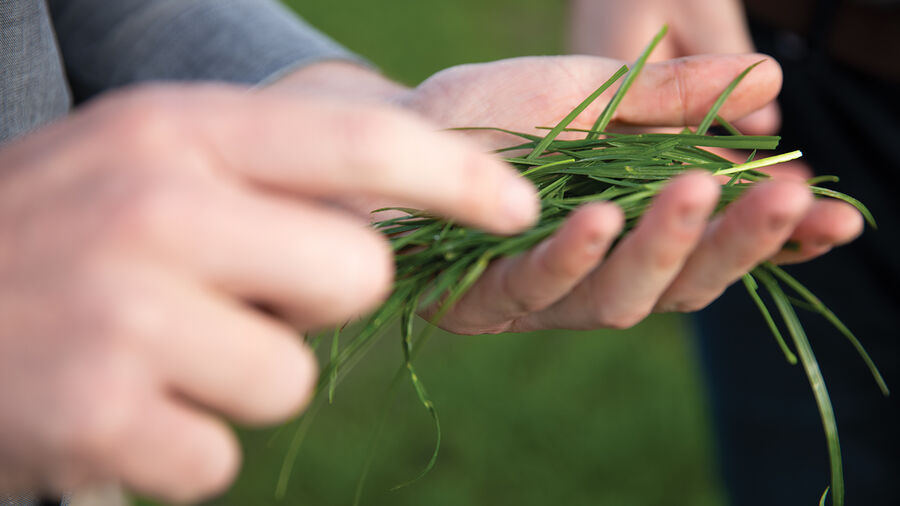
Pasture is the cornerstone of agricultural productivity, wielding immense influence over farm gate output. In fact, it stands as the primary contributor to both per head and per hectare production. Thanks to the rich organic matter content soils and advanced soil management practices, we are fortunate to possess some of the world's finest pastoral land. Productivity has been further improved by our adoption of rotational grazing techniques, pioneered by New Zealand farmers. This method has become the backbone of both intensive and extensive livestock systems, allowing us to harness new pasture genetics and species, thereby optimising farm profitability.
Amidst the financial challenges posed by high finance costs, volatile export markets, escalating fertiliser prices, and ever-evolving environmental regulations, the temptation to trim costs is undeniable. However, it is paramount that we prioritise our primary revenue generator – our Pasture. Extracting the maximum kilograms of high-quality dry matter from our paddocks stands as the most economically sound approach to driving milk and meat production on our farms. Within this context, regrassing emerges as a critical tool that enables us to amplify output with low investment.
Consider the transformation of a paddock's productivity from 12 tons of DM/ha to 18 tons of DM/ha. This yields an additional 6 tons of DM/ha, translating to roughly $3,980/ha. After deducting the regrassing cost of $1,300/ha, which encompasses all inputs, the return amounts to a significant $2,680/ha. Notably, this ROI calculation is confined to just one year; the subsequent five-six years continue to reap solid returns on this investment.
As farm system agronomists ensuring our farmers have the correct re-grassing rotation length in place is challenging in an economically stressed trading environment. Striking the right balance is key. Overextending the rotation to, more than 6 years leads to low performing paddocks, directly undercutting meat and milk production. Conversely, a rotation that's too short results in pasture area deficits, pushing farmers deep into pockets to fork out for costly supplementary feeds. Collaboration with agronomists is essential in pinpointing the right fields for regrassing, timed to coincide with the point where pasture supply outstrips demand. To address a surplus of underperforming paddocks, over sowing proves to be a valuable tool to minimise the duration these areas spend out of rotation.
Biomass production (yield) coupled with sward quality are the linchpins of pastoral success. The combination of these factors drives milk and meat production. Any dip in quality directly corresponds to a decline in production. This phenomenon follows a linear trajectory, resulting from an increase in stem and seed head content. This shift in quality detrimentally impacts milk and meat output by constraining energy intake and impeding rumen clearance.
One of the key contributors to the quality aspect of a pasture sward is the legume content, in particular clover. Let's delve into the economic advantage clover brings. It’s not often we get something for free, but with clover, you receive 25kg of nitrogen per hectare for every ton of dry matter produced. Attaining a 30% clover content in your pasture equates to growing circa 5 tons DM/ha of clover in the sward, thereby acquiring 125kg/ha of nitrogen annually. Clover also surpasses ryegrass in consistent and superior quality, proving to be a more efficient converter of dry matter to milk or meat.
Unfortunately, the clover content on the majority of dairy and sheep and beef farms rarely surpasses 5%. A visual assessment can be deceiving, and estimation tends to overinflate the actual content. Achieving a content of 30% or more mandates precise matching of pasture species to specific areas and appropriate sowing rates. Remarkably, this incurs no extra costs, yielding a value of $220/ha in free nitrogen. Additionally, feed quality results in significant downstream benefits too.
In a landscape marked by economic challenges, the role of pasture renovation emerges as pivotal in optimising farm output. However, any cost-cutting efforts in this area warrant meticulous scrutiny, ensuring the preservation of low-cost, efficient milk and meat production. It is imperative not to let financial constraints drive ill-advised choices regarding the upkeep of our most profitable asset—our land.
Our skilled agronomists stand ready to offer unwavering support, underscoring the truth that in tough times, wise decisions ensure our highest returning asset. Our Pasture!
Key Points:- Regrassing can increase productivity from 12 tons of DM/ha to 18 tons of DM/ha, resulting in a return of $2,680/ha after deducting regrassing costs.
- Correct re-grassing rotation length is crucial; extending rotation over 6 years reduces performance, while a shorter rotation leads to supplementary feed expenses.
- Achieving 30% clover content in pasture provides 125kg/ha of nitrogen annually and improves feed quality.
- Most dairy and sheep/beef farms have clover content below 5%, necessitating specific species matching and sowing rates for higher content.
- Achieving 30% clover content yields an extra value of $220/ha in free nitrogen.
- Balancing financial challenges with the need to prioritize pasture nurturing is essential.
- Collaboration with agronomists is crucial for optimal regrassing decisions and addressing underperforming paddocks.
- Yield and sward quality are crucial for milk and meat production, with lower quality impacting rumen clearance and energy intake.
- Wise decisions in pasture renovation ensure high-yield milk and meat production even in tough economic times.